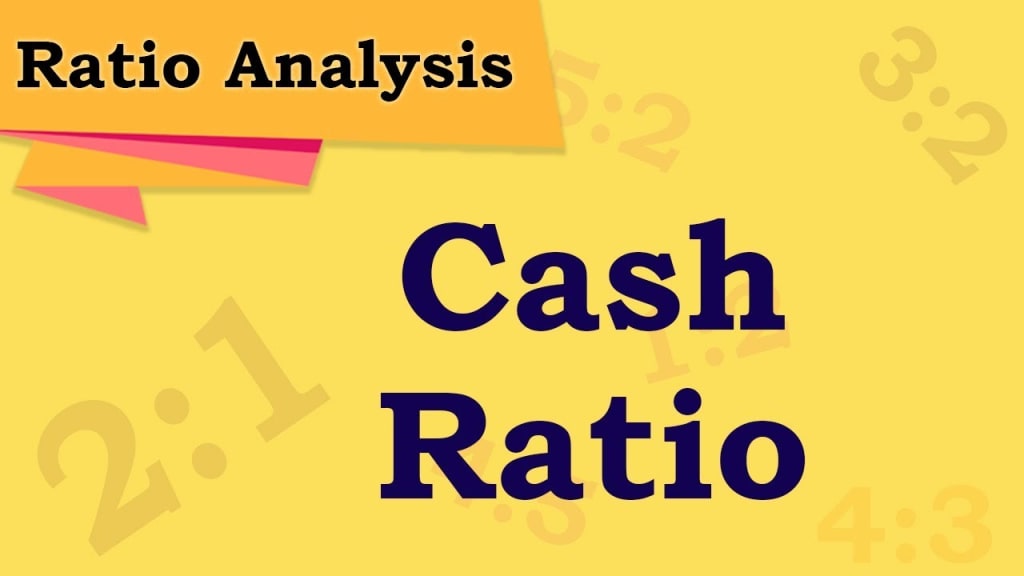Understanding the Cash Ratio: A Guide for Investors
A Beginner's Guide to Understanding the Stock Market

Introduction:
When it comes to evaluating a company's financial health, one important metric to consider is the cash ratio. This ratio is used to measure a company's ability to cover its short-term liabilities with its available cash and cash equivalents. In this article, we'll explore what the cash ratio is, how it's calculated, and how it can be used by investors to assess a company's financial stability.
What is the Cash Ratio?
The cash ratio is a financial ratio that compares a company's cash and cash equivalents to its current liabilities. Cash and cash equivalents include cash on hand, bank deposits, and short-term investments that can be easily converted to cash. Current liabilities are obligations that a company is expected to pay within the next 12 months.
The cash ratio formula is:
Cash Ratio = Cash and Cash Equivalents / Current Liabilities
A higher cash ratio indicates that a company has more cash and cash equivalents relative to its current liabilities, which suggests that it is more financially stable and better positioned to meet its short-term obligations.
Interpreting the Cash Ratio:
The cash ratio is an important metric for investors because it provides insight into a company's liquidity and financial strength. A higher cash ratio indicates that a company has more cash available to cover its short-term liabilities, which can be reassuring to investors.
However, it's important to note that a high cash ratio isn't always a positive sign. A company may be holding onto excess cash that could be better used for growth opportunities or to pay off debt. Additionally, a low cash ratio may indicate that a company is struggling to meet its short-term obligations, which could be a red flag for investors.
Limitations of the Cash Ratio:
Like any financial ratio, the cash ratio has its limitations. It only considers a company's short-term liquidity and doesn't take into account its long-term financial health. Additionally, the cash ratio doesn't consider a company's potential for growth or its ability to generate cash from operations.
Summarise
Have you ever earned money from doing chores or getting an allowance? And then you save some of that money in your piggy bank or wallet? Well, companies also earn money from selling things or providing services, and they also need to save some of that money in case they need it later on.
The cash ratio is a financial metric that shows how much money a company has in its savings compared to its current liabilities, which are the things the company needs to pay for soon, like bills or rent. It helps investors understand if the company has enough money saved up to pay for its upcoming expenses.
For example, let's say a company has $100,000 in its savings account, and it needs to pay $50,000 in bills next month. The cash ratio would be 2:1, which means the company has twice as much money saved up as it needs to pay its upcoming bills.
Investors like to look at the cash ratio because it shows how financially stable a company is. If a company has a high cash ratio, it means it's more likely to be able to pay its bills and other expenses on time. But if a company has a low cash ratio, it might struggle to pay its bills and might not be as financially stable.
Overall, the cash ratio is an important metric that helps investors understand how financially stable a company is and whether it's a good investment.
Conclusion:
The cash ratio is a way to measure a company's ability to pay its short-term debts using its available cash and cash equivalents. This means how much money a company has to pay for things they owe in the next 12 months. The cash ratio formula is cash and cash equivalents divided by current liabilities. A higher cash ratio is good because it means the company can pay its debts easily. However, a high cash ratio isn't always good because the company might not be using the money wisely. The cash ratio is only one way to measure a company's financial health and should be used with other tools.
About the Creator
Tag Business
I Will Providing Various Company Information
Enjoyed the story? Support the Creator.
Subscribe for free to receive all their stories in your feed. You could also pledge your support or give them a one-off tip, letting them know you appreciate their work.






Comments
There are no comments for this story
Be the first to respond and start the conversation.